
views
Calculating Your Handicap Differential

Play golf! To determine your handicap differential and index, you will first need some golf scores to work with. For the best results, work with at least five scores, but using 20 scores is preferable. Tally your gross score from every individual game. The gross score is the actual number of strokes taken over an entire course.
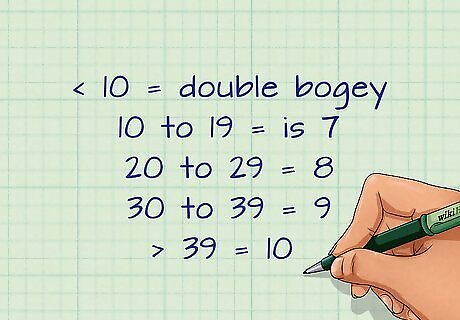
Determine your adjusted gross score. On any hole where you’ve exceeded the maximum allowable strokes, deduct the necessary number of strokes. For instance, if you took nine strokes on a hole but have a maximum allowable score of seven, subtract two from your score for that hole. Recount your total for the course using the adjusted numbers. The United States Golf Association’s equitable stroke control uses the following guidelines for a course handicap of: Nine or less: maximum score per hole is a double bogey 10 to 19: maximum score is seven 20 to 29: maximum score is eight 30 to 39: maximum score is nine 40 and above: maximum score is 10 (use this default if you haven't yet determined your handicap)

Find the course slope. While the course rating is the difficulty rating for a golfer who shoots par (on average), the course slope is the difficulty rating based on a bogey golfer. A bogey golfer is a player who shoots 18 strokes over par, on average. The course rating and slope for a particular course are usually found on the score card. You can also check at the clubhouse, or on the course's website.
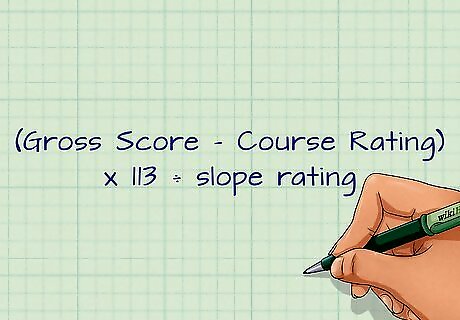
Determine your handicap differential. This is a calculation involving the difference between your adjusted gross score and the course rating. The equation to determine this is: (Adjusted gross score - course rating) x 113 ÷ slope rating Round this number to the nearest tenth.

Repeat these steps for every score. Always use your most recent scores, up to a maximum of 20.
Calculating Your Handicap Index
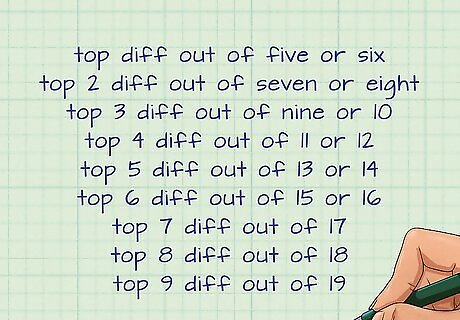
Select your best handicap differentials. Choose your 10 best (lowest) differentials if you are working with 20 scores. If you don’t yet have 20 scores to work with, select: Your top differential out of five or six Your top two differentials out of seven or eight Your top three differentials out of nine or 10 Your top four differentials out of 11 or 12 Your top five differentials out of 13 or 14 Your top six differentials out of 15 or 16 Your top seven differentials out of 17 Your top eight differentials out of 18 Your top nine differentials out of 19
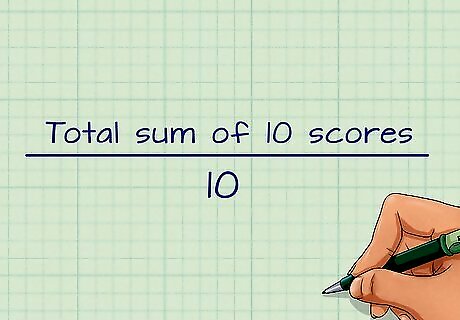
Average your best differentials. Add all the scores together, then divide that number by the amount of scores you're working with. For instance, if you’re working with 10 scores, add all 10 together and then divide that by 10; if you’re working with three differentials, divide the sum by three.
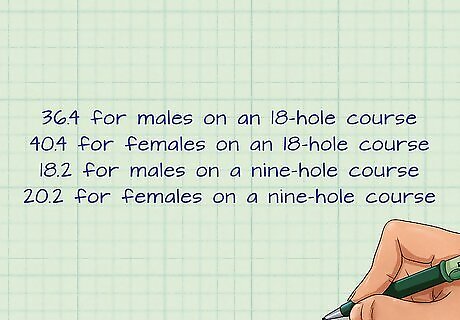
Determine your handicap index. Multiply your differential average by 96 percent, or 0.96. Then, without rounding any of the numbers, delete all the numbers after the tenths decimal place. This number is your handicap index. There are maximum default handicap indexes, and they are: 36.4 for males on an 18-hole course. 40.4 for females on an 18-hole course. 18.2 for males on a nine-hole course. 20.2 for females on a nine-hole course.
Calculating a Course Handicap

Multiply your handicap index by the slope rating. Now that you have your handicap index, this portable number can be taken to any course and used to calculate your course handicap for any set of tees. Again, the slope rating should be listed on your score card, at the clubhouse, or on the course's website.
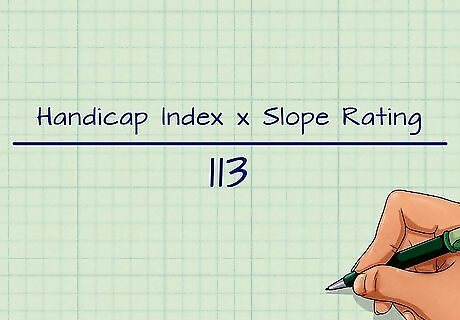
Divide the product by the standard slope rating. This is an average difficulty rating for courses, and the USGA has determined that this average slope is 113. So, after you multiply your handicap index by the slope rating, divide it by 113.
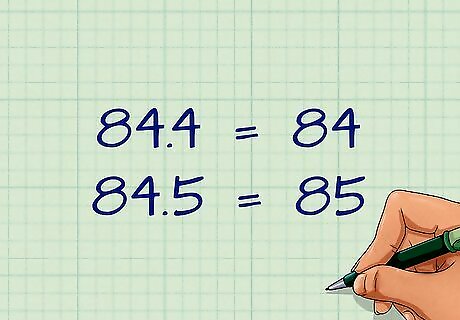
Find your course handicap. Round that number to the nearest whole number. Any number ending in .4 or below is rounded down, and any number ending in .5 or above is rounded up. This rounded whole number is your course handicap.




















Comments
0 comment